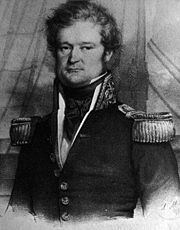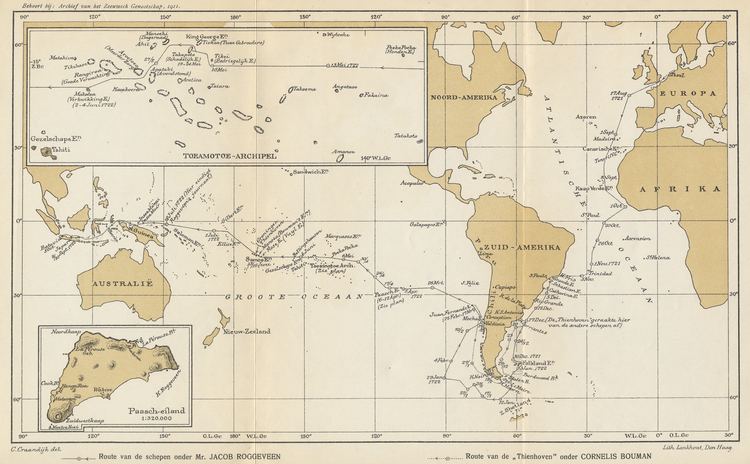Name Jacob Roggeveen | Religion Protestant Spouse Anna Clement | |
 | ||
Born 1 February 1659 ( 1659-02-01 ) Middelburg Parent(s) Arend Roggeveen, Maria Storm Died January 31, 1729, Middelburg, Netherlands Books The journal of Jacob Roggeveen | ||
Jacob roggeveen paaseiland easter island
Jacob Roggeveen (1 February 1659 – 31 January 1729) was a Dutch explorer who was sent to find Terra Australis, but he instead came across Easter Island. Jacob Roggeveen also encountered Bora Bora and Maupiti of the Society Islands, Samoa. He planned the expedition along with his brother Jan Roggeveen, who stayed in the Netherlands.
Contents
- Jacob roggeveen paaseiland easter island
- EASTER ISLAND RAPA NUI ISLA DE PASCUA
- Early career
- Explorations
- References

EASTER ISLAND-RAPA NUI-ISLA DE PASCUA
Early career
His father, Arend Roggeveen, was a mathematician with much knowledge of astronomy, geography, rhetorics, philosophy and the theory of navigation as well. He occupied himself with study of the mythical Terra Australis, and even got a patent for an exploratory excursion; but it was to be his son who, at the age of 62, eventually equipped three ships and made the expedition.
He became notary of Middelburg (the capital of the province of Zeeland, where he was born) on 1 February 1659. On 12 August 1690 he graduated as a doctor of the law at University of Harderwijk. He married Marija Margaerita Vincentius, but she died in October 1694. In 1706 he joined the Dutch East Indies Company, and between 1707 and 1714 as a Raadsheer van Justitie ("Council Lord of Justice") at Batavia, Dutch East Indies (now Jakarta). He married Anna Adriana Clement there, but she died soon afterward. In 1714, he returned to Middelburg by himself.
He became involved in religious controversies, supporting the liberal preacher Pontiaan van Hattem by publishing his leaflet De val van 's werelds afgod (The fall of the world's idol). The first part appeared in 1718, in Middelburg, and was subsequently confiscated by the city council and burned. Roggeveen fled from Middelburg to nearby Flushing. Thereafter he established himself in the small town of Arnemuiden, and published parts 2 and 3 of the series, again raising a controversy.
Explorations
On 1 August 1721 he left on his expedition, in the service of the Dutch West India Company, to seek Terra Australis. It consisted of three ships, the Arend, the Thienhoven, and Afrikaansche Galey and had 223 men on crew.
Roggeveen first sailed down to the Falkland Islands (which he renamed "Belgia Australis"), passed through the Strait of Le Maire and continued south to beyond 60 degrees south to enter the Pacific Ocean. He made landfall near Valdivia, Chile. He visited the Juan Fernandez Islands, where he spent 24 February to 17 March. The expedition later arrived at Easter Island (Rapa Nui) on Easter Sunday, 5 April 1722 (whereupon he reported seeing 2,000-3,000 inhabitants). He then sailed to Batavia by way of the Tuamotu Archipelago, the Society Islands, and Samoa. There he was arrested because he had violated the monopoly of the Dutch East India Company, but the Company was later forced to release him, to compensate him for the trouble, and to pay his crew. In 1723, Roggeveen returned to the Netherlands.
After his return Roggeveen published part 4 of De val van 's werelds afgod.
